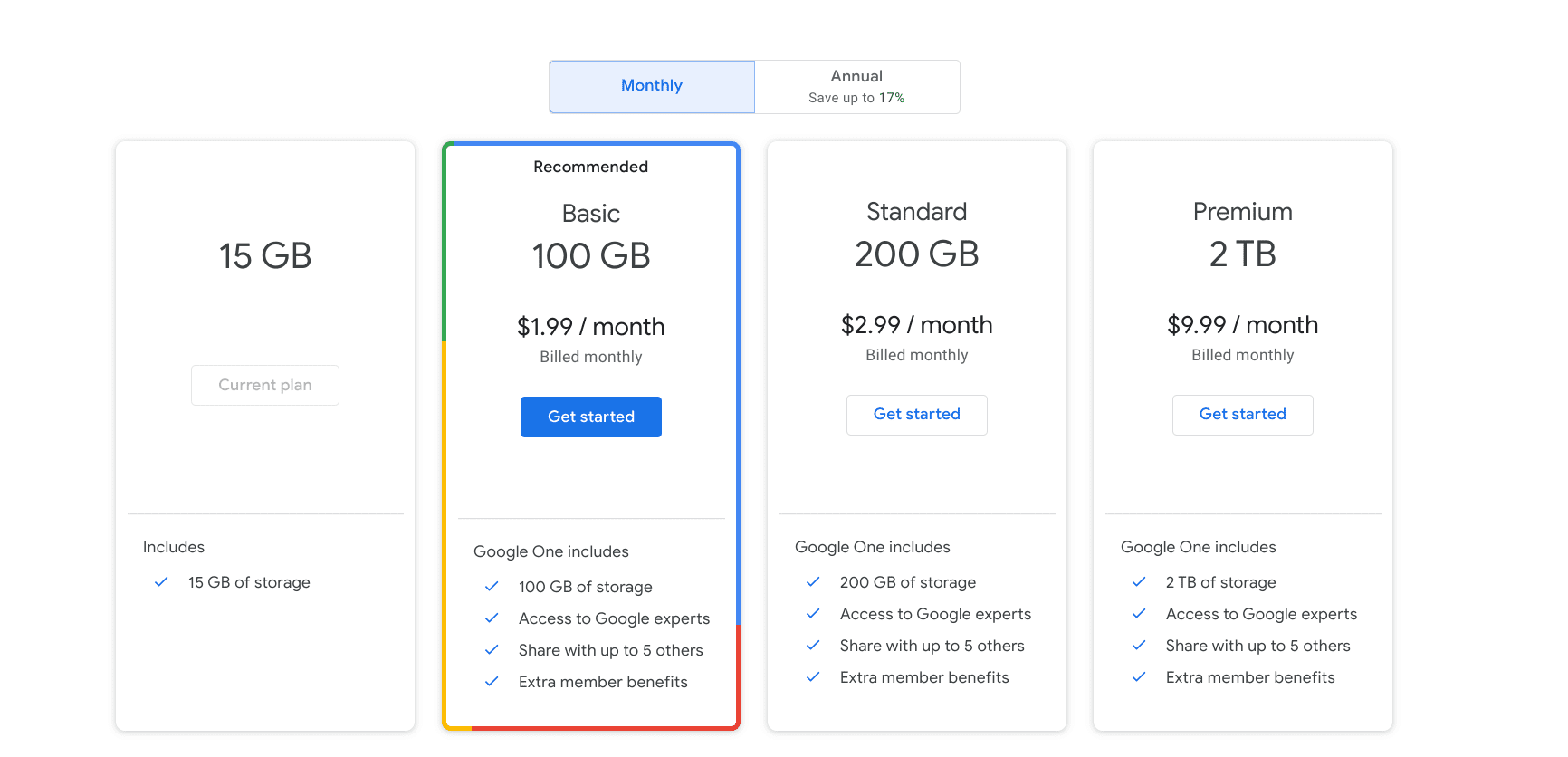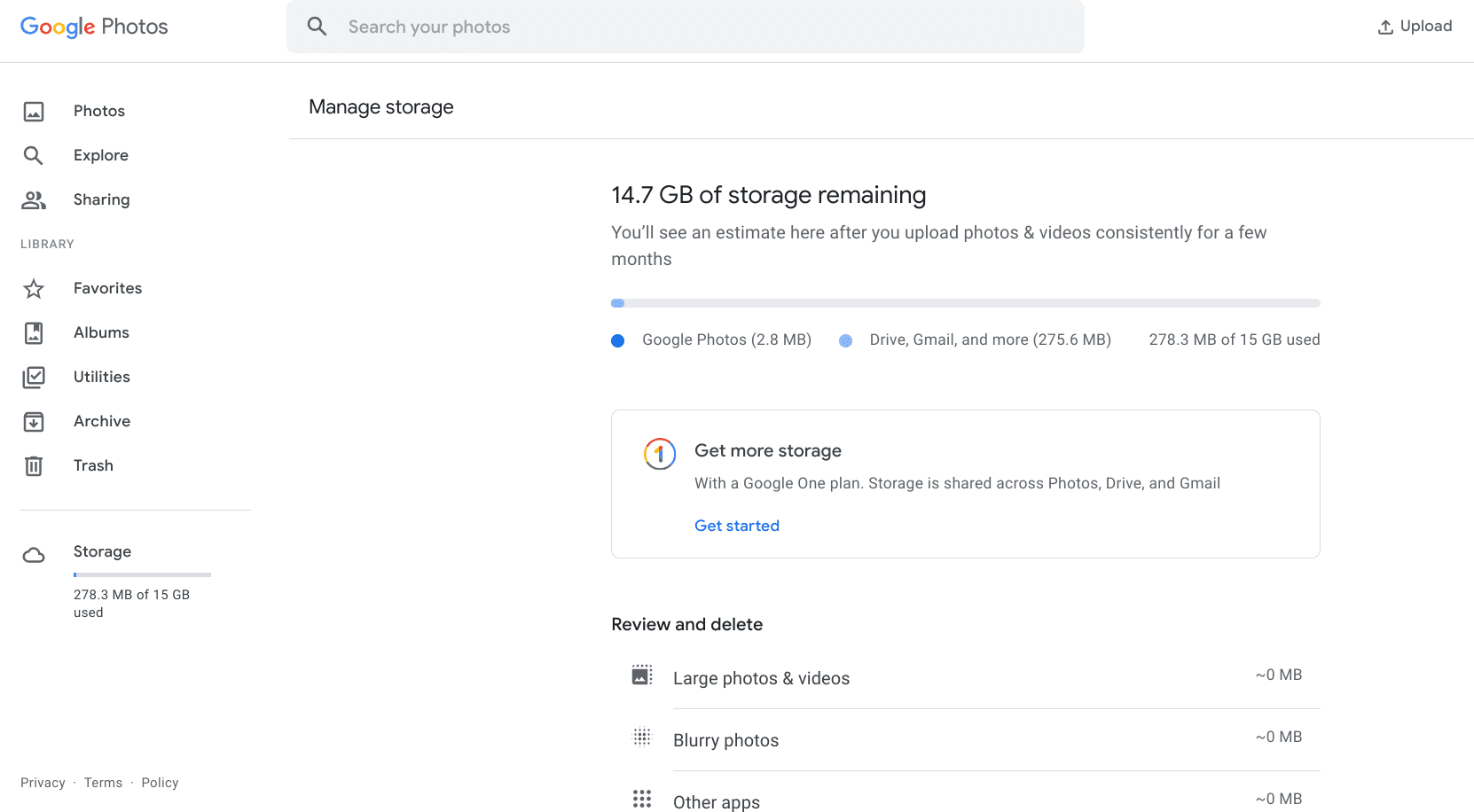Google Photos is as efficient as a cloud-oriented photo storage service can get. It came out back in 2015 and has been the developer’s mainline cloud repository for all things media files. Users worldwide have downloaded the app on their mobile phones, with the Google Play Store variant of the software accumulating a massive 5 billion download count all on its own.
With that said, a couple of points need to be understood regarding the usage of Google Photos, with its space capacity being one of them. This article will cover what you need to know about the Google Photos storage limit in 2022 and how you can utilize the available space effectively. We’ll be casting a lens on the brief background of the application and following it up with everything latest in 2022.
The origin of Google Photos
As iterated earlier, Google Photos came out about 7 years ago, tracing its release to May 28, 2015. During the time of its launch, the developer proclaimed that users would be able to upload a limitless number of “High quality” images to the cloud for free. At the time, this feature seemed too good to be true, and it was until June 1, 2021. Previously, there was no cap on only top-end image uploads to Google Photos.
After that time, however, Google made it official that users looking to get their high-quality images on the cloud would no longer be able to enjoy unlimited storage. The news arrived at the forefront of the technological world as a blog post on the Google Photos Help forum. The developers instilled plenty of helpful information in that post regarding the current state and the future of the cloud storage solution service.
We’ll be talking about all that in much detail in the next section, so you’ll be able to understand what the shape of Google Photos storage limit looks like in 2022.
Recent policy changes regarding Google Photos storage limit
Although recent, it has been quite a while since Google decided to switch up its standard policy for the amount of free storage allotted to basic Google Photos users. According to the popular tech giant, June 1, 2021, has marked the era of limited app usage from a free user perspective. You need to look closely at the new policy change if you hadn’t paid for Google Photos before and used the free version.
That is to say; it is no longer possible to upload an unlimited number of high-quality photos to the cloud. Previously, if users had opted for the “High quality” setting when uploading their images, they would be liable to repeat the process a limitless number of times. However, looking at things from the perspective of a new user, things are different now and need to be tended to for the best results.
Google has changed the Google Photos upload policy so that free users will now only get 15 GB of free storage. And this, too, will continue along with the two other cloud-based services of Google, which are Gmail and Google Drive. In summary, 15 GB is the total of what you have across Google Photos, Drive, and Gmail. So use that space wisely if you do not want to upgrade to a paid plan.
This brings us to talk about the veteran users of Google Photos who have been using the application for a long time. The usage period goes back to the new policy update, so what happens to the photos uploaded before the incorporation of no free storage anymore? Well, the answer to that is simple. Everything that occurred before the policy change has nothing to do with the current state of affairs.
Your uploaded photos will stay there for free, no questions asked. However, any photo upload after the policy implementation will be counted toward your free 15 GB limit. Sounds pretty fair if we’re being honest. At least you’re not compelled to decide on your previously stored photos in a dire situation. What went down in the past has nothing to do with today’s policies.
With that said, if you’ve been a regular Google Photos user who has to make uploads consistently, you might need more space to go along with your account. Of course, if Google has put a limit on the amount of free storage you can grab for yourself, there is something that will help you go beyond the shackles of the free 15 GB storage limit.
Fortunately, Google has introduced purchasable storage plans in the wake of the new substantial change for Google Photos. Let us look at these and how you can get the better of them. In the meantime, please consider checking out how to backup and sync photos to Google Photos on your PC.
How to get more Google Photos storage
There is a quick and straightforward way to upgrade your regular Google account and make it more technically advanced than ever. With the onset of the new policy surrounding Google Photos’ free storage limit, the developers also implemented various changes into the purchasable plans that can get you more storage. Today, the famous conglomerate has a Google One subscription—a one-for-all service that lets you enjoy added cloud storage across different Google apps.
The latter includes Google Photos, Google Drive, and Gmail. Here’s a direct link to the Plans and Pricing section of the website, where you can painlessly acknowledge all the various ways Google lets you buy more storage for your photos. You can be billed either monthly or yearly, depending on what suits you better. If you’d like our advice, it’s better to go with the annual plan if you can pay more upfront. That way, you’d be saving up to 17%.
With that said, the free tier comes with the “Basic” membership plan, granting you 100 GB of storage, access to Google experts for technical help, sharability feature, and bonus benefits available exclusively for Google One members. On a month-to-month basis, the Basic plan will set you back $2. The next subscription tier is called “Standard.” Every benefit remains the same except for the storage capacity.
This purchasable plan will provide you with a whopping 200 GB of storage and the rest of the perks discussed above in the Basic tier. Finally, you’ve got “Premium” to talk about, and this is just top-of-the-line stuff here. Prepare to enjoy 2 TB of extra storage with your Google account by paying $10 per month. This is the very best that Google One has to offer to its aspiring users.

Google One pricing plans
Please visit the direct link to get started with purchasing any of the Google One upgrade plans. The rest of the procedure will be clockwork. Dial in your billing details if you haven’t already, and tap on a few buttons to make the magic happen.
Another way to manage storage limit in Google Photos

Google Photos storage management tool
There is something that users of the free storage tier of Google Photos can employ. There’s this neat feature of the service that Google calls a storage management tool, and it’s all about providing you with the best available options to utilize your free storage to the most effective extent. You won’t be purchasing any extra storage this way. Instead, manage the amount of data you already have.
In simple terms, the Google Photos storage management tool scans your photos for duplicates, blurry shots, and large-sized files and presents them to you. That way, it’ll be possible to review the selections personally and decide whether they’re worth keeping or not. More often than not, we don’t realize how much junk can accumulate on the cloud if you’ve turned on automatic sync on your mobile phone. It’s a great idea to cut back on costs and utilize what you already have.
Some of the most prominent highlights of the storage tool of Google Photos include discovering the amount of storage you have left and how long you can keep it stored in the cloud. In case you didn’t know, cloud or remote servers do not function like local storage. There comes a time when your uploaded photos will be deleted automatically from the cloud, but that’s usually a significant amount of time from the date of their initial upload.
In addition, the factor kicks in heavily when you’re not using the cloud service frequently and letting it stay idle for extreme longevity. You might not even be able to visualize the storage time estimate that way, not to mention the inclusion of other factors such as already filled up the storage or the usage of an IT-provided account from your workspace or school.
Lastly, the Google Photos storage management plan is excellent when it boils down to reviewing options. It lets you instantly glance at all your saved images and decide which ones to keep and which to let go of. Then there’s the option to purchase more storage from Google One, which is nothing but the cherry on top. Here’s a direct link to the management tool, should you take a good look at it yourself.
Are there any exceptions to the free storage limit?
Yes, you’d be surprised to discover a pleasant exception to the storage limit in Google Photos, and it comes with the developer’s main lineup of mobile phones—the Google Pixel. Of course, we mean that if you’ve got a Pixel phone lying around, you won’t have to worry about limits on uploading photos to the cloud-based service. One of the many support pages on the Google blog reports that Pixel owners won’t have to pay to store their photos on Google Photos.
However, for this to be utilized effectively, please remember that the uploads must come from Google Pixel phones and no other device. Otherwise, your uploads will be factored in with your free storage so that the latter will be used up piece by piece. This is good news for Google Pixel owners. The new updated policy regarding Google Photos does not apply to them, so they can keep reaping the benefits of unlimited photo upload storage without breaking a sweat.
Unfortunately, that’s about it as far as the exceptions are concerned. If you do not have a Pixel smartphone, you will need to purchase more storage through the Google One subscription or use the storage management tool to make the best of Google Photos.
Conclusion
Google has had a multi-faceted approach with Photos over the years. It started strong with the application, boasting unlimited storage for high-end photos, but that changed drastically throughout the next period. The switch was flipped in June of 2021 when Google announced the storage limit of Google Photos. Previously, there was no level cap on the number of images you could upload to the repository.
However, in 2022, you get 15 GB of storage as a free user, and it’s only about shelling out bucks from there on out. We’ve laid out the different purchasing plans in one of the sections above for your convenience if you happen to be a power user and require more storage. Please let us know whether you found the guide helpful in the comments section. We would love to read your feedback!
